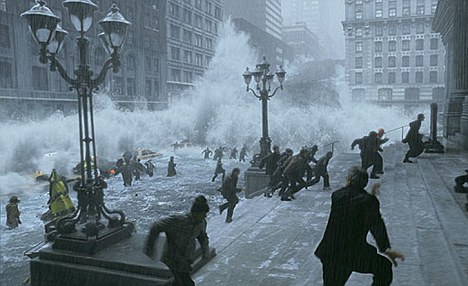Climate change is a growing concern as temperatures rise and the weather becomes unpredictable. The average global temperature has risen .13℉ since 1880. These changes impact many different areas, from agriculture to economic factors.
Yet, people are impacted differently. Those in the lower economic classes are likely to be hit harder by the effects of climate change. They rely on the agriculture industry and have less income to build resilient infrastructure. Here are some easy ways we can try to help.
Start With an Assessment of Community Risks
Government officials need to focus on climate when making urban planning decisions. So, they should conduct a thorough analysis of the climate risks for each community. For example, rising temperatures are a problem for naturally humid places like India. Therefore, we should provide greater access to cooling systems and shaded infrastructure.
Another critical step is involving members of the community. Be open to hearing their suggestions, since they know the area the best.
Put Adaptation Strategies Into Place
Once we know what issues people face, we can try to minimize the impacts of climate change. These adaptation measures need to be well-funded. These strategies can include building sea walls and making infrastructure more flood-resilient. Building houses on stilts or installing sump pumps can help protect vulnerable families. In addition, contractors should place retaining walls around homeowners’ AC units.
Along with preparing for floods, sustainable agriculture practices need to be adopted. These include methods like crop rotation or planting cover crops. Many rural counties rely on produce as their main source of income. In fact, the poorest one-third of countries in the U.S. could experience income loss of 2-20%.
Besides protecting people from natural disasters, we also need to help them financially. With these new developments, many countries will face financial burdens. To reduce this pressure, use methods like increased social assistance or cash transfers.
Develop a Disaster Plan
A disaster plan can help lay out the steps required if an emergency occurs, such as severe flooding. To ensure the water doesn’t collect quickly, contractors should install building drainage systems. In addition, it’s essential to have an evacuation plan in place. Local representatives need to coordinate with outside countries to receive resources and transportation.
Also, they should encourage families to have a first aid kit and food on hand. Local officials can also recruit residents to be part of the emergency team and aid others.
The response team should hold regular meetings to discuss the plan details. During this time, consider any residents with special needs and make accommodations. For example, someone with a wheelchair will need ramp access when entering a vehicle.
Also, have a mass alert system to let community members know when a disaster has occurred. Try to find one using the Integrated Public Alert and Warning System (IPAWS) to maximize reach to all travelers.
Reduce Our Carbon Emissions
In 2019, the U.S. emitted about 5,130 million metric tons of carbon dioxide. The gasses cause air pollution and lead to global warming. So, curbing our carbon emissions is vital. One way is for people to switch to renewable energy sources, like solar or wind. Solar panels are becoming a growing trend for eco-friendly homeowners. Besides helping the planet, they also cut down on your energy bills.
Another way to reduce carbon emissions is by taking public transportation or carpooling. Agriculture is another industry that contributes to greenhouse gas emissions. Meat production is one example. The digestive process for cows releases methane gasses. So, switching to a more vegetarian diet is good for the planet and your health.
Along with these changes, financial policies can help. For example, carbon taxes can benefit poorer countries. These higher taxes can support infrastructure developments for these areas.
How We Can Do Our Part
While climate change may not be a top concern for everyone, it hits less-developed nations the hardest. The rising temperatures and severe storms leave these people more vulnerable. So, it’s essential to develop adaptation strategies and cut carbon emissions to minimize the impacts of climate change.



